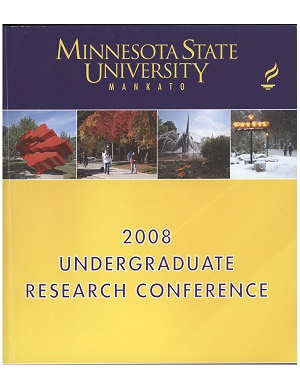Aperiodic Tilings: The Relationship between Spectrum and "Bubbles"
Location
CSU 284
Start Date
21-4-2008 8:00 AM
End Date
21-4-2008 10:00 AM
Student's Major
Mathematics and Statistics
Student's College
Science, Engineering and Technology
Mentor's Name
Brian Martensen
Mentor's Department
Mathematics and Statistics
Mentor's College
Science, Engineering and Technology
Description
An n-dimensional tiling is formed by laying tiles, chosen from a finite collection of shapes (prototiles), with their boundaries touching and filling n-dimensional euclidean space. This tiling is aperiodic if any sliding (translation) produces a different tiling. Aperiodic tilings appear in Physics in the study of quasi-crystals and their spectrum, in Biology and Computer Science in the study of neural networks, and in Mathematics in the coding of attractors. Analyzing the structure of aperiodic tilings yields information relevant to these applications. Given a tiling, we form an associated continuum on which translation is induced. This tiling contains "bubbles" which combinatorially take the form of translational disagreements and allow us to distinguish between multiple tilings. We also use them to establish a relationship between the geometry of the continuum and the dynamics of the translation operation. Our research demonstrates a correspondence between "bubbles" and what are know as balanced tiles, expanding on the current research by considering the geometry of the tiles instead of merely their combinatorics. In this way, it is shown that geometrically balanced tiles determine the dynamics and spectral properties of a tiling. In particular, our "bubbles" can lead directly to the x-ray diffraction patterns of the associated quasi-crystals.
Aperiodic Tilings: The Relationship between Spectrum and "Bubbles"
CSU 284
An n-dimensional tiling is formed by laying tiles, chosen from a finite collection of shapes (prototiles), with their boundaries touching and filling n-dimensional euclidean space. This tiling is aperiodic if any sliding (translation) produces a different tiling. Aperiodic tilings appear in Physics in the study of quasi-crystals and their spectrum, in Biology and Computer Science in the study of neural networks, and in Mathematics in the coding of attractors. Analyzing the structure of aperiodic tilings yields information relevant to these applications. Given a tiling, we form an associated continuum on which translation is induced. This tiling contains "bubbles" which combinatorially take the form of translational disagreements and allow us to distinguish between multiple tilings. We also use them to establish a relationship between the geometry of the continuum and the dynamics of the translation operation. Our research demonstrates a correspondence between "bubbles" and what are know as balanced tiles, expanding on the current research by considering the geometry of the tiles instead of merely their combinatorics. In this way, it is shown that geometrically balanced tiles determine the dynamics and spectral properties of a tiling. In particular, our "bubbles" can lead directly to the x-ray diffraction patterns of the associated quasi-crystals.
Recommended Citation
Rand, Ashely. "Aperiodic Tilings: The Relationship between Spectrum and "Bubbles"." Undergraduate Research Symposium, Mankato, MN, April 21, 2008.
https://cornerstone.lib.mnsu.edu/urs/2008/oral-session-02/2



